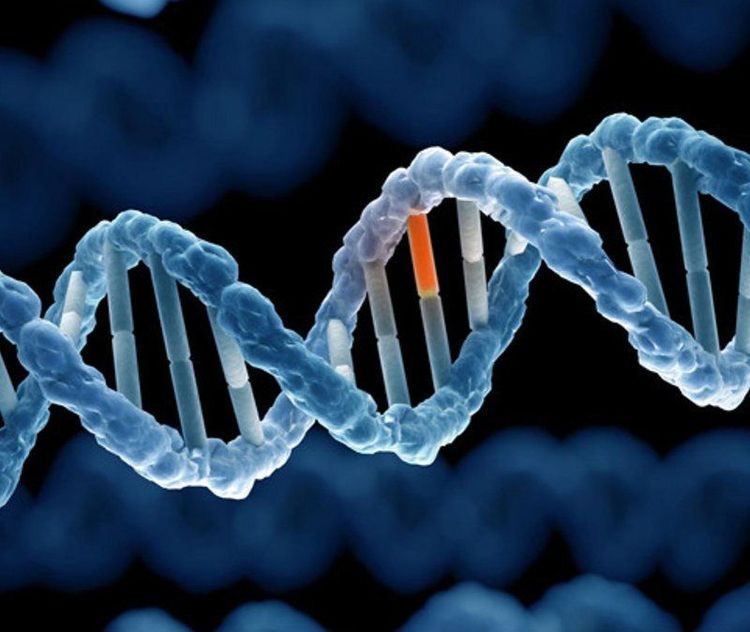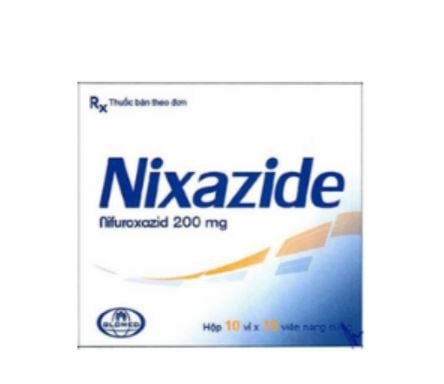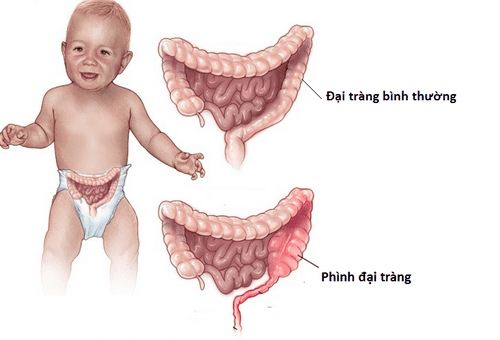This is an automatically translated article.
The article was professionally consulted by Specialist Doctor II Tran Van Trong - Department of General Surgery - Vinmec Da Nang International Hospital
Congenital megacolon is a disease related to the colon that is common in young children, and can also be seen in newborns. It is one of the leading causes of intestinal obstruction in children. Ulcerative colitis is easy to detect and can be treated thoroughly, but if left too late, the disease can cause many very dangerous complications.
1. What is congenital megacolon?
Congenital megacolon (also known as congenital dilated colon or Hirschsprung's disease) is a condition in which the colon is dilated due to a lack of nerve cells in the muscles of the large intestine, leading to obstruction of the large intestine. . The bowel above the blockage swells, resulting in abdominal distension and irregular bowel movements.2. Causes of congenital megacolon in children?
There are many different causes of congenital megacolon in children and this disease is related to genetic factors.During the fetal period, the baby's alimentary canal is not fully developed, the lack of ganglion cells in the nerve plexuses between the two muscular layers of the anal canal is the main cause of the loss of spontaneous peristalsis. movement of intestinal muscles, causing the child's intestines to not contract normally and the child cannot defecate.

3. Signs of congenital megacolon
Signs and symptoms of congenital megacolon vary according to the severity of the disease. Usually the symptoms appear soon after the baby is born, but sometimes they don't become apparent until the child is older.For infants, the most recognizable signs are that the baby has not passed meconium after more than 24 hours, the baby's abdomen is distended, vomiting and showing signs of dehydration. When the anus is stimulated with a catheter, the child passes a lot of stools, similar to the phenomenon of removing a plug in a drain. For older children, the main symptom is persistent constipation, unable to defecate on their own, but having to remove enema and stimulate. The stools come out without form, have a very rotten smell and are black (due to bacteria accumulation).
4. Consequences of congenital megacolon

Causes repeated enteritis. Intestinal obstruction, even intestinal perforation. Therefore, children need to be diagnosed and treated promptly to reduce the risk of congenital megacolon.
To treat the disease effectively, depending on the cause of the disease, the doctor will conduct different treatment methods such as surgical removal of the damaged colon and reconnecting the healthy upper part to the anal canal. . In addition to the professional qualifications of the doctor, the medical facility is also one of the decisive factors for the success of the treatment process.
Colonoscopy and all other technical procedures performed at Vinmec are strictly controlled, meeting international quality standards, ensuring safety and quality for patients.
Before each case, the endoscope system is guaranteed to be sterile, bringing absolute safety to the patient. After the procedure is over, the endoscope is cleaned with an Olympus automatic endoscope washing machine under the RO water purification system.
Please dial HOTLINE for more information or register for an appointment HERE. Download MyVinmec app to make appointments faster and to manage your bookings easily.














